Myrmecochory (pronounced: muhr-muh-koh-KOR-ee) is the dispersal of fruits and seeds by ants. I love this word!
At the Arboretum, there are three plants (trillium, bleeding heart, and the inside-out flower) with seeds that have a white, oil-rich appendage known as an elaiosome, which is attractive to ants. They will collect the seed to eat the elaiosome and then discard the seed, thus helping to disperse it.
This one is the seed of the inside-out flower. The pods split open and curl back into interesting, wavy shapes revealing beautiful red seeds nestled in foamy white elaiosomes. I imagine them being a delicate French pastry in the case of a bakery in Paris.
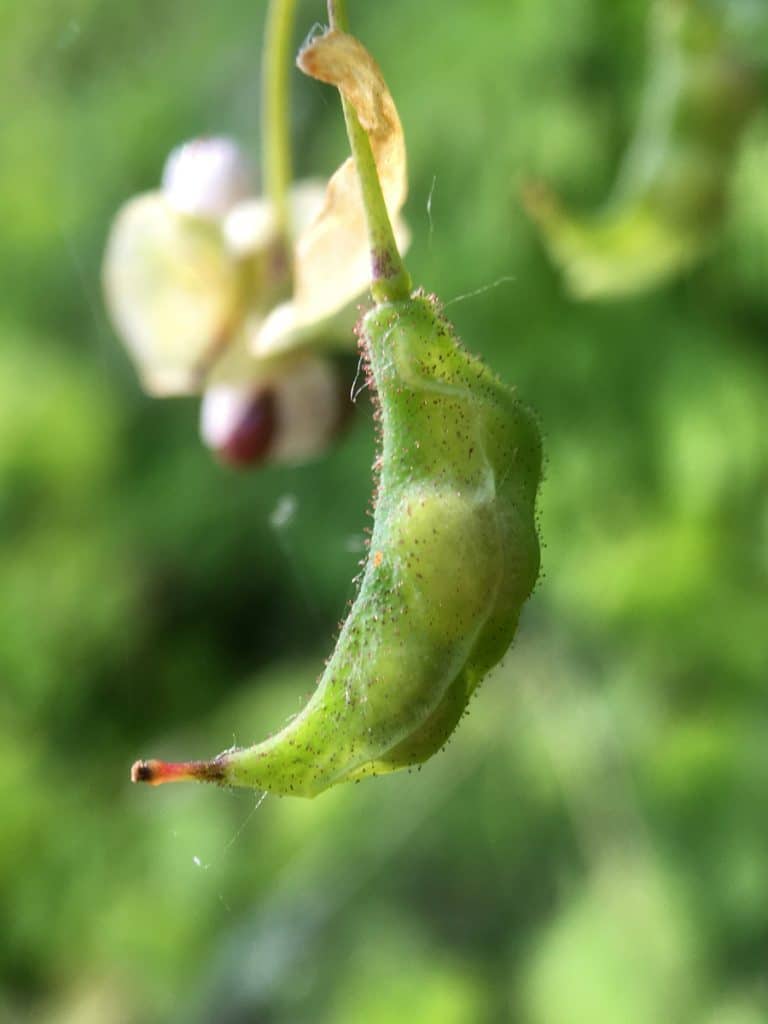
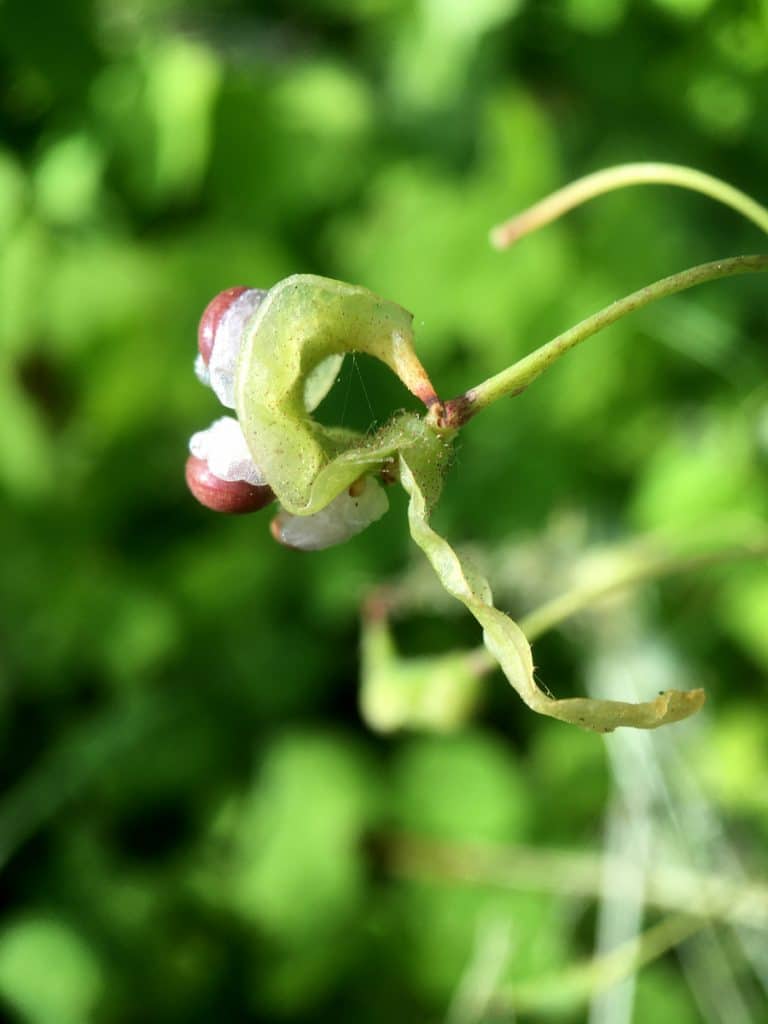
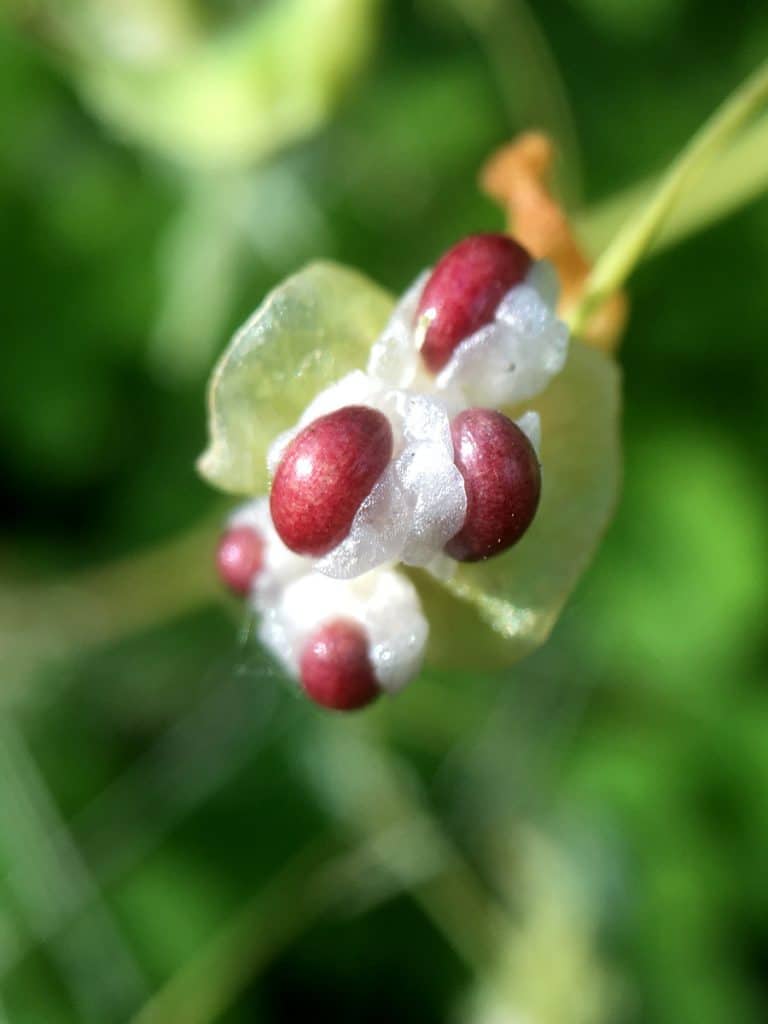
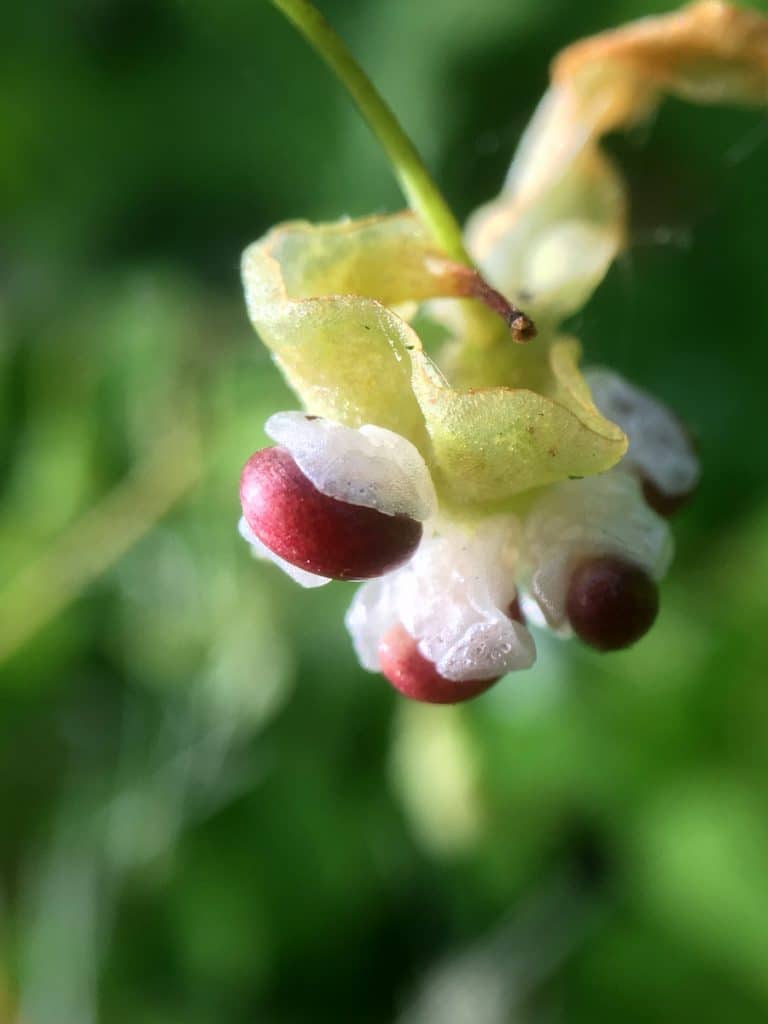
I put these seeds on a well-traveled ant trail and they immediately were attracted to them. Interestingly, they removed the elaiosome in pieces and carried it off. They didn’t take the seed with the elaiosome attached back to the nest to process it. I watched them for an hour and a half dismantle one of the elaiosomes and leave the seed behind a small distance from where I had placed it.

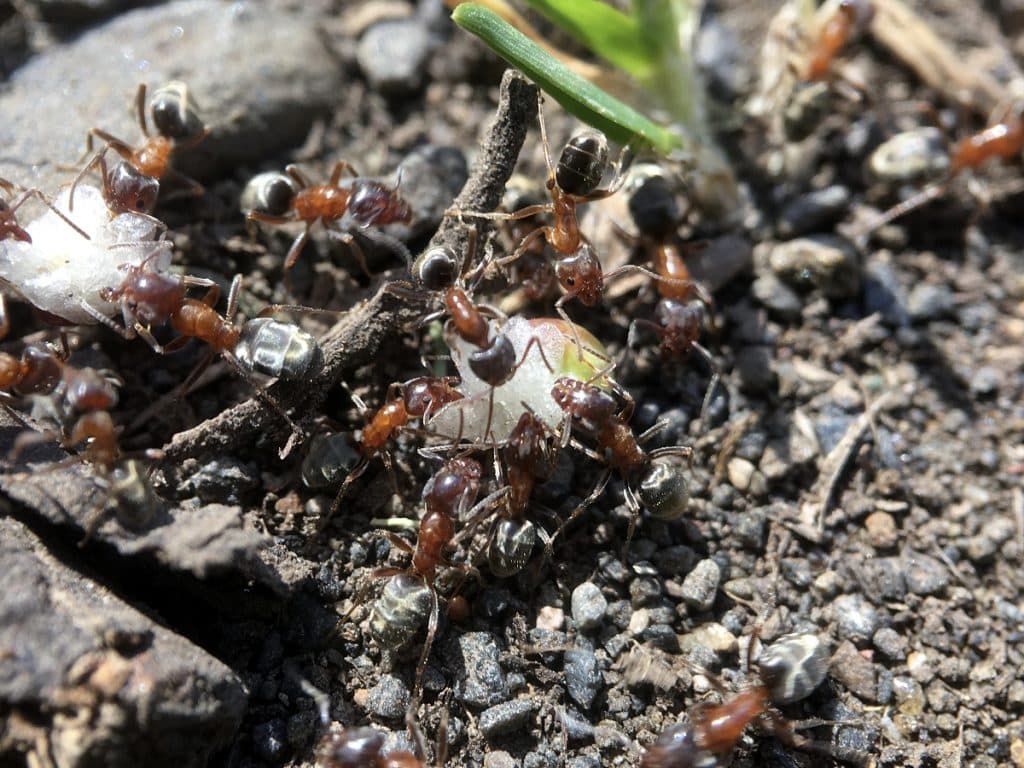
When I watched ants tear open the pods of the trillium, they also took the elaiosome off the seed and discarded the seed next to the plant. They didn’t transport it back to the nest to remove the elaiosome. I took the bleeding heart seeds, put them on the same ant highway, and the ants took them away within a minute without first removing the elaiosome from the seed. Maybe those seeds were smaller or lighter which made them easier to transport.
Seeds are amazing, and I recommend checking out the ways they travel across the landscape. They can fly through the air, float on water, attach to the fur of animals, roll across the ground, launch as the seed pod bursts open, and be carried off by birds or insects.
Nature is an inexhaustible source of wonder. I hope to see you out there.

